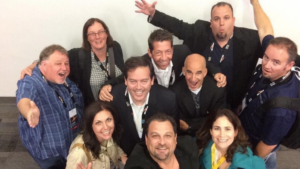Over the years, we’ve learned that information comes to us in a lot of different ways. Back in the day, content was socialized through much more traditional means like radio, television, direct mail and newspaper. These mediums allowed for longer lead times to plan, create and execute what we wanted to say to drive a consumer to act in our favor. Now that we’ve expanded into online, digital, and social spaces, the once mass communication era where messages were broadcast out in one direction, has moved into a quick, real time two-way conversation.
I’m a child of the “microwave generation”, which means getting things pretty much “on demand” has become a part of my expectation in life. I’m not alone in this; Consumers everywhere are also changing in their need for instant gratification in how and when they receive information. This “need for speed” is driving how quickly information is created, which seems faster and more real time every day. As our ‘always on’ society continues to evolve, socializing content on demand to connect our ideas with others quickly and efficiently will become table stakes in our expectations as humans.

In 1982, Richard Moreland and John Levine created a model of group socialization based on a phases to explain how individuals transition into a group. I believe the same phases apply to our new “Socialization On Demand” culture. I’ve adapted their phases below to help refine our approach in our ever faster-moving marketing efforts:
Stage 1: Investigation As humans, we carry the desire to discover and search for new things. Whether as brands or individuals, it’s important that we listen to first hear and understand what people are saying. When we understand the issues, needs and desires of our customers and prospects, we can better guide our marketing in real time.
Stage 2: Socialization The movie industry is known for sharing their movies with a small audience before they get released. When they are first being socialized, test audiences are presented with different scenes and sometimes different endings to observe their reactions. The same is true of social campaigns on a faster scale; socialize your stuff, ask for feedback, and apply the rules of Improv to make something better. The wisdom of the crowd can help shape brilliance.
Stage 3: Maintenance Everything we learned in socializing should help us respond quickly and be able to proactively define next steps. Socializing the content isn’t enough, it’s what happens after you hear back that helps you redefine how to ultimately reach your desired outcome.
Stage 4: Re-socialization Tweets, blogs, webinars and generally most content has a longer shelf life than we think. Books have been written by pulling together content and building a storyline from all the past hard work you put together. Going back to the movie industry example above, sometimes movies are re-released years later with new scenes and enhanced media, giving the audience something something new to look forward to. There are always new audiences who might want your content if repackaged in the right way.
Stage 5: Remembrance Bottom line, everything is cyclical. If you don’t take the time to reflect on the results of how you did, socialization on demand will never be relevant the next time you go to market. Look back, listen and learn to become smarter the next time around. That’s what it’s all about.
KEY TAKEAWAY: Humans are shaped by social influence. When you know your audience well, you can release information quickly, gather feedback, iterate as necessary, and continue the cycle. Keeping up with our on-demand culture isn’t enough if you’re not delighting them along the way – in real time, over, and over, and over again.
Featured image courtesy of www.hypebot.com





